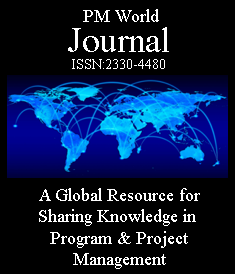proposal for a structural model
SECOND EDITION
By María Elizabeth Arteaga-García
Professor at Universidad Espíritu Santo, Ecuador
and
Cecilia Alexandra Portalanza-Chavarría
Professor at Universidad Espíritu Santo, Ecuador
Ecuador
Abstract
This research aimed to evaluate a structural model that explains the performance of projects based on four critical success factors: client communication, monitoring and planning, senior management, and technical activities, resulting from the process of adaptation and validation of the Project Implementation Profile (PIP) instrument in the Ecuadorian context. The adapted PIP was distributed online to directors involved in projects conducted in Ecuador, obtaining 328 responses. SMART PLS 4 was used to study the equations of the structural model and its multi-group analysis among project team leaders and members. The evaluation showed that the model’s explanatory power was moderate, and the proposed relationships between technical capabilities, senior management, and performance were positive and statistically significant. The multigroup analysis demonstrated differences in the perception of project success between leaders and team members. The results of this study contribute new knowledge in the area of project management to the Ecuadorian Academy.
Keywords: project management; critical success factors; success criteria, PLS-SEM; multigroup analysis
Desempeño de la gestión de proyectos en Ecuador: propuesta de un modelo estructural
Resumen
Esta investigación tuvo por objeto evaluar un modelo estructural que explica el desempeño de los proyectos a partir de cuatro factores críticos de éxito: comunicación con el cliente, seguimiento y planeación, alta gerencia y capacidades técnicas, resultante del proceso de adaptación y validación del instrumento Perfil de Implementación del Proyecto (PIP) al contexto ecuatoriano. El PIP adaptado fue distribuido online a directores e involucrados en proyectos realizados en Ecuador, obteniéndose 328 respuestas. Para el estudio de las ecuaciones del modelo estructural y su análisis multigrupo entre líderes y miembros de equipos de proyectos se utilizó SMART PLS 4. La evaluación dio como resultado que el poder explicativo del modelo es moderado y que las relaciones propuestas entre los factores críticos capacidades técnicas y alta gerencia y el desempeño son positivas y estadísticamente significativas. El análisis multigrupo demostró diferencias de percepción sobre el éxito del proyecto entre líderes y miembros de equipo. Los resultados de esta investigación contribuyen con nuevo conocimiento en el área de la gestión de proyectos a la academia ecuatoriana.
Palabras clave: gestión de proyectos; factores críticos de éxito; criterios de éxito, PLS-SEM; análisis multigrupo
- Introduction
All organizations, without exception, face changes in their environment that generate problems or new opportunities, which they must resolve [1,2], and that is when they turn to project management since this is a relevant factor for achieving their strategic objectives and a means to become competitive [3-5], as long as the proposed projects are successful [6]. This has been the motivation for academics in the last fifty years to propose several models of criteria that define the success of projects [7]: the Barnes triangle (time, cost, and quality) [8], the Project
Implementation Profile (time, cost, performance, perceived quality, and client satisfaction) [9], a theoretical model of information systems [10], the diamond approach (efficiency, client impact, team impact, business and success, and preparation for future) [11], the success of project management and deliverables [12], and the generic model of Zwikael and Meredith [13].
However, for the study of project success, in addition to the success criteria, the critical success factors are the other components that define it [14]. Like success criteria, critical success factors have also been studied over the same time, resulting in some frameworks [15]: the Project Management Environment Survey [16], the survey of Baker, et al. [17], whose dimensions are project manager, team engagement, team project capacities, planning and control among others, the seven factors of Morris and Hough [18], the Project Implementation Profile [19], the practices of project management, deliverables management, and corporative success [6], the project, team project, organization and environment factors [20], and the factors by stage of Khang and Moe [21].
When asked why critical factor frameworks and project success models continue to be proposed, the answer is that no single list can be applied to all projects equally since the characteristics of the context influence the project itself [22-26]. Organizations in Latin America are not characterized by good performance in managing their projects, which is reflected in the fact that they register a rate of 15% of failed projects and monetary losses of 122 million for every billion dollars invested [27,28]. Such organizations are less likely to realize their strategic goals, obtain expected benefits, and become more competitive [29]. However, in these studies [27,28], no indicators were reported by country, so the specific situation of Ecuador was not known. Starting from the fact that research on project performance in Ecuador is scarce, Arteaga [30] conducted an exploratory study that revealed that of every 100 projects, only 27 were classified as high performance. That is to say, in Ecuador, the performance of project management, as in Latin America, has a lot to improve, and it is relevant to identify the critical factors and success criteria of Ecuadorian projects, the first step being the identification of a measuring instrument for each of these components
Among the critical success factor frameworks identified by Ika and Pinto [15] is the Project Implementation Profile (PIP) by Pinto and Slevin [19], recognized as a project diagnostic instrument that covers human and managerial aspects through 10 factors that have positive and statistically significant relationship with project success [31]. Shortly after, Pinto and Slevin [9] added a section to measure project performance to the PIP among the success models reported by Ika and Pinto [7]. Consequently, the PIP facilitates the measurement of the two components of project success [14]. However, despite its versatility, it has not been used in the Ecuadorian context, except in the study by Padilla et al. [32], who analyzed the ten critical success factors in technological projects. For all of the above, Arteaga-García and Portalanza- Chavarría [33] adapted and validated the PIP to the Latin American context, resulting in an instrument of 28 items (23 for factors and 5 for success criteria) with adequate consistency and validity indices to evaluate the performance of Latin American projects, mainly Ecuadorian.
In addition, they proposed a measurement model to explain project performance based on four factors: Client communication, monitoring and planning, technical activities, and senior management. Among future research, the authors suggested evaluating the structural model and using multigroup analysis techniques to carry out comparative studies of the model. Therefore, the purpose of this article is to evaluate the structural model to determine whether the resulting four critical success factors positively and significantly impact project performance and to employ multigroup analysis techniques to make comparisons of the model according to the role played in the project by the interviewee (leader or team member).
More…
To read entire article, click here
Editor’s note: Second Editions are previously published papers that have continued relevance in today’s project management world, or which were originally published in conference proceedings or in a language other than English. Original publication acknowledged; authors retain copyright. This paper was originally published in DYNA, 92(236), Universidad Nacional de Colombia, Febrero 2025.It is republished here with the authors’ permission.
Suggested citation: Arteaga-Garcia, M.E., Portalanza-Chavarria, A. (2025). Project management performance in Ecuador: proposal for a structural model; Originally published in DYNA in February, republished in the PM World Journal, Vol. XIV, Issue IV, May 2025. Available online at https://pmworldlibrary.net/wp-content/uploads/2025/05/pmwj152-May2025-Arteaga-Portalanza-project-management-performance-in-Ecuador-2nd-ed.pdf
About the Authors

Elizabeth Arteaga-Garcia
Guayaquil, Ecuador
![]()
Ma. Elizabeth Arteaga-García is a doctoral candidate in Administration and Management of Organizations at Universidad Espíritu Santo (Ecuador), with a solid academic and professional background in project management. She holds master’s degrees in Project Management from BES La Salle (Universidad Ramón Llull, Spain) and Business Administration from Université du Québec à Montréal (Canada) and ESPAE ESPOL (Ecuador). Elizabeth is a PMP-certified professional, currently serving as the Quality and Accreditation Leader and Director of Master’s programs in Operations and Technology at UEES. She has been recognized for her academic contributions, including several publications, awards, and editorial roles in prominent scholarly journals. She can be contacted at elizabeth.arteaga@uees.edu.ec
ORCID: https://orcid.org/0000-0003-4786-0094

Cecilia Alexandra Portalanza-Chavarría
Guayaquil, Ecuador
![]()
Alexandra Portalanza-Chavarría is the General Director of the Online Division at Universidad Espíritu Santo in Ecuador, with over 15 years of experience at the institution. She served as the Executive Director of the Center for Research, and previously led the Graduate School from 2009 to 2016. Alexandra holds a PhD in Management Sciences from Universidad del Rosario (2012-2018), an MBA from Escuela Superior Politécnica del Litoral (1994-1996), and a Commercial Engineering degree from Universidad Laica ‘Vicente Rocafuerte’ de Guayaquil (1988-1993). Her academic background and leadership experience make her a key figure in higher education and research management in Ecuador. She can be contacted at aportalanza@uees.edu.ec or
ORCID: https://orcid.org/0000-0002-9782-5089









